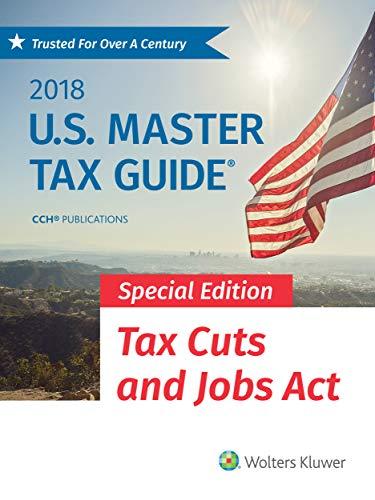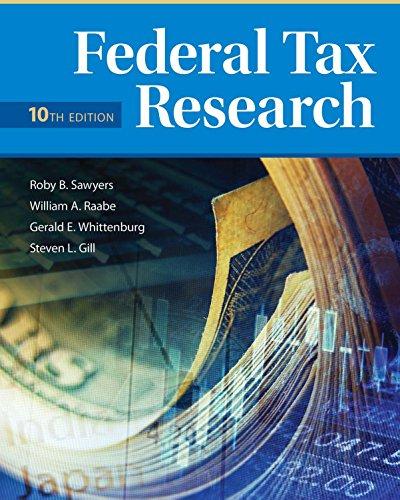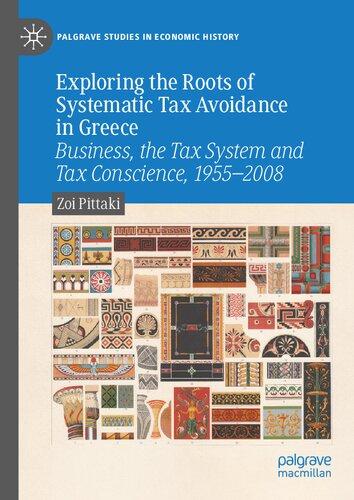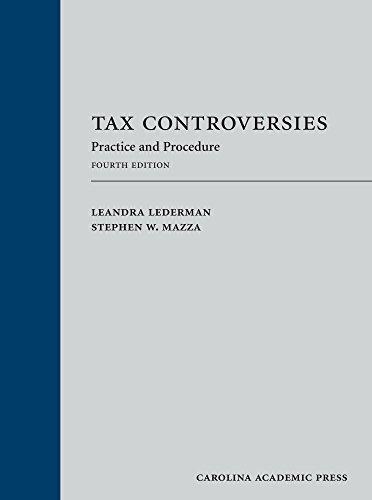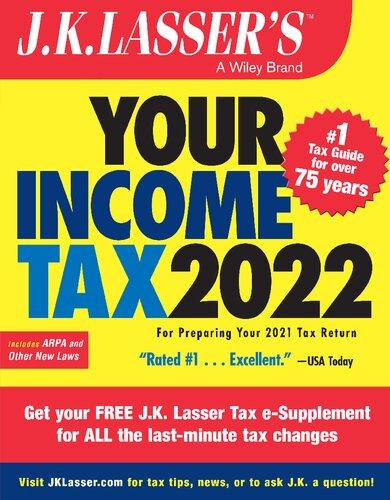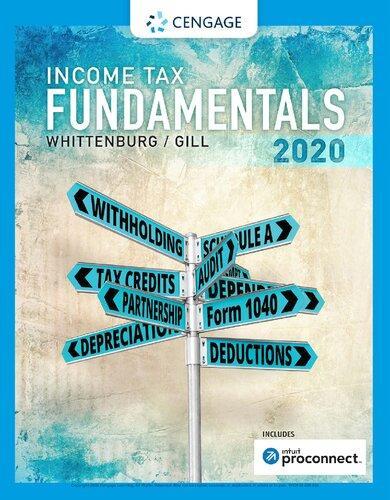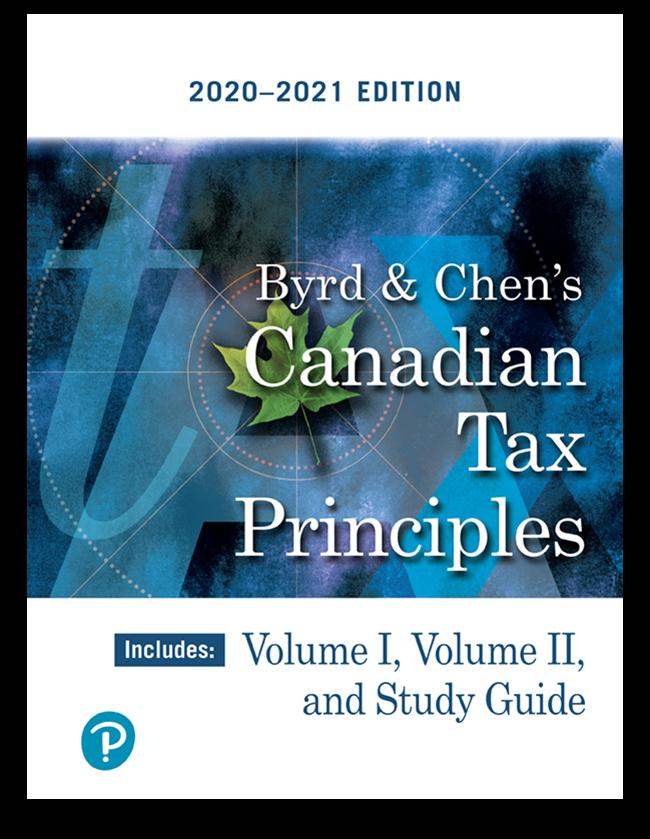Wolters Kluwer Tax and Accounting
EDITORIAL STAFF
Frans Klaassen, Executive VP and GM, Canada and Research & Learning
U.S. Jennifer M. Lowe, J.D., Senior Director, Editorial Jennifer Robertson, J.D., Editorial Director, Tax
Elizabeth Albers, M.B.A., Director, Content Solutions and Optimization
Explanation
and Analysis
Michael Henaghan, J D , LL M , Managing Editor
John Buchanan, J D , LL M , Senior Writer Analyst & U S Master Tax Guide® Coordinator
Catherine S. Agdeppa, J.D. Caroline L. Hosman, J.D., LL.M. Emily Baugh, J.D. Jessica Jeane, J.D. David Becker, J.D.
Daniel C Johnson, J D , LL M Marlia Berg, J D Nitasha A Kadam, J D Timothy Bjur, J D Carol Kokinis-Graves, J D
Anne E Bowker, J D , LL M Carolyn Kwock, J D Cathleen Calhoun, J D Laura LeeLun, J D
Liliana Dimitrova, LL.B., LL.M. Noelle Erber, J.D. Alicia C. Ernst, J.D. Bernita Ferdinand, J.D. Shannon Jett Fischer, J.D.
Donna M Flanagan, J D Mary Jo Gagnon, C P A Bruno L Graziano, J D , M S A
Joy A Hail, J D , LL M , Managing Editor
Amber Harker, J.D. Kathleen M. Higgins John Logan, J.D.
Managing Editor
Lisa Lopata, J.D.
Mark A Luscombe, J D , LL M, C P A , Principal Analyst
Rocky Mengle, J D
Robert A Morse, J D , LL M
John J Mueller, J D , LL M , Managing Editor
Jean T Nakamoto, J D
Jerome Nestor, J.D., M.B.A., C.P.A., Managing Editor
Karen A Notaro, J D , LL M , Managing Editor
Brian Nudelman, J D
Melissa O’Keefe
Deborah M Petro, J D , LL M Brian Plunkett, J D
Robert Recchia, J D , M B A , C P A
Carolyn M. Schiess, J.D.
James Solheim, J D , LL M Andrew Soubel, J D
Raymond G. Suelzer, J.D., LL.M. Kenneth L. Swanson, J.D., LL.M. Laura A. Tierney, J.D.
Tralawney Trueblood, J.D., M.B.A.
Kelley Wolf, J D , LL M
Susan M. Zengerle, J.D., LL.M., Managing Editor
David Allan, Senior Digital/Print Coordinator
Trent Allan
Product Market and Development Manager
Electronic and Print Production Craig Arritola
Angela D Bretschneider
Douglas Bretschneider
Josalyn Coleman, Associate Marketing Manager
Jennifer Ericksen Amelia Eslava Debra Fogg Laila Gaidulis Patrick Gallagher Mary Ellen Guth Meghan Klick Ellen Kuksuk Andrejs Makwitz
Redgie Martinez, Design Manager Tina Medina Elaine Ogawa, Managing Editor
Jose Robles, Product Line and Channel Manager
Jennifer K Schencker David Schuster Tuan Tran
and Death Benefits ........................... 803
Annuities............................................. 817 Bequests and Gifts
...................................... 847 Personal Injury and Disability Proceeds ....................... 851 Cancellation of Debt . . .................................. 855
Education and Disability Benefits . . . . . . ...................... 863 Other Exclusions from Gross Income......................... 871 Military Benefits ....................................... 891
Chapter 9: Business Expenses
Trade or Business Expenses . . . ............................ 901
Compensation Paid...................................... 906
Entertainment, Meal, and Gift Expenses ....................... 910 Taxes ...................................... ......... 920
Charitable Contributions . . . . . . . . .......................... 927 Interest ..................................... ......... 937
Employee Business Expenses . . . . . . ........................ 941 Transportation and Car Expenses . . . . . ....................... 945
Traveling Expenses Away from Home . . . . . . . . . . .............. 949
Home Office and Vacation Home Expenses..................... 961
Other Business Expenses . . . . . . . . . . . ...................... 968
Domestic Production Activities Deduction .................... 980A PassThrough Income Deduction . . . . . . ..................... 980P Professional Expenses . . . . ............................... 981 Farmer’s Expenses...................................... 982 Rents and Leasehold Payments . . . . . . . . ..................... 986 Mining Company’s Expenses . . . ............................ 987 Uniform Capitalization (UNICAP) Rules ....................... 990
Chapter 10: Nonbusiness Expenses
Deductions, Generally . . . . ............................... 1001 Adjusted Gross Income (AGI) . . . . . . ........................ 1005 Phaseout of Itemized Deductions . . . . . ....................... 1014 Medical Expenses ...................................... 1015 Taxes, Generally ....................................... 1021 Real Property Taxes . . ................................... 1028 Interest ..................................... ......... 1043
Charitable Contributions . . . . . . . . .......................... 1058 Moving Expenses....................................... 1073
Miscellaneous Itemized Deductions .......................... 1079 Production of Income Expenses . . . . . . . . . .................... 1085 13
Paragraph Chapter 11: Losses Passive Activity Losses
Deduction of Losses . . ................................... 1101 Casualty and Theft Losses . . . . . . . . . . . ...................... 1121 Bad Debts
............................................ 1135 Net Operating Losses (NOLs) . . . . . .
........................ 1145 At-Risk Limitations ...................................... 1155
Passive Activity Limits on Losses and Credits . . . . . . . . . . ......... 1165
Rental Activities Subject to Passive Activity Rules . . . . . . . ......... 1181
Excess Business Loss and Tax-Exempt Use Property . . . . . ......... 1190
Hobby Losses ......................................... 1195
Chapter 12: Depreciation, Amortization and Depletion
DEPRECIATION
Allowance for Depreciation . . . ............................. 1201 Basis for Depreciation . . .................................. 1203 Section 179 Expense Election . . . . . . ........................ 1208 Limitations on Automobiles and Other Listed Property............. 1211 Depreciation Methods . . . . . ..............................
1216 Leased Property........................................ 1234 Modified Accelerated Cost Recovery System (MACRS) . . .......... 1236 Accelerated Cost Recovery System (ACRS)..................... 1252 Class Life ADR System . . . . ............................... 1282 Energy Efficiency Commercial Buildings Deduction . . . ........... 1286 AMORTIZATION
Allowance for Amortization . . . ............................. 1287 DEPLETION Depletion ............................................ 1289 Mineral Production Payments . . . . . ......................... 1291 Percentage Depletion . . .................................. 1294
Chapter 13: Tax Credits
Nonrefundable Personal Credits . . . . . . ...................... 1301 Refundable Personal Credits . . ............................. 1321 Health Care Credits . . ................................... 1331
Nonbusiness Energy Credits . . ............................. 1341
Alternative Motor Vehicle Credits ........................... 1345 Foreign and Possession Credits . . . . . . . . ..................... 1361
General Business Credits . . . . . . . . . . . ...................... 1365 Tax Credit Bonds ....................................... 1371
Chapter 14: Alternative Minimum Tax
AMT Liability................................. .........1401
AMT Preferences and Adjustments .......................... 1425 Credits Against Minimum Tax . . . . . . ........................ 1470
Paragraph Chapter 15: Tax Accounting
Accounting Period ...................................... 1501 Accounting Method . . ................................... 1515 Timing of Income and Expenses . . . . . . ...................... 1533 Long-Term Contracts . . .................................. 1551
Inventories ........................................... 1553 Allocation and Reconstruction of Income ...................... 1573
Chapter 16: Basis for Gain or Loss
Computing Gain or Loss . . . . . . . . .......................... 1601
Property Acquired by Purchase . . . . . . . . . .................... 1611
Property Acquired by Gift or Bequest ......................... 1630
Property Acquired by Exchange . . . . . . . . . .................... 1648
Other Acquired Property . . . . . . . . .......................... 1678
Valuation Rules ........................................ 1695
Chapter 17: Sales and Exchanges Capital Gains
SALES AND EXCHANGES
Sales and Exchanges of Property . . . . . . ...................... 1701
Gain or Loss from Sale of Residence.......................... 1705
Involuntary Conversion . . . . ............................... 1713 Transactions Between Related Persons . . . . . . . . . . .............. 1717
Tax-Free Exchanges . .................................... 1719
CAPITAL GAINS AND LOSSES
Capital Gains and Losses . . . . . . . ........................... 1735
Section 1231 ................................. ......... 1747
Capital Loss Limitation, Carryover, Carryback . . . . . . . . . .......... 1752
Subdivision of Real Estate . . . . . . . . . . . ...................... 1762
Patents, Royalties, and Franchises ........................... 1767
Disposition of Depreciable Property .......................... 1779
Farmers’ Recapture . .................................... 1797
Incentives for Economically Distressed Communities . . . . . ....... 1799A
Chapter 18: Installment Sales Deferred Payments
INSTALLMENT SALES
Installment Method . .................................... 1801
Computation of Income . . . . . .............................. 1813
Related-Party Sales...................................... 1833
Repossessions of Property . . . . . . . . . . . ...................... 1838
Dispositions of Installment Obligations . . . . . . . . . . .............. 1846
Corporate Liquidations . . . . . .............................. 1856
DEFERRED PAYMENTS
Imputed Interest ....................................... 1859
Paragraph Chapter 19: Securities Transactions
Taxation of Securities Transactions .......................... 1901 Gains and Losses on Small Business Stock ..................... 1905 Worthless Securities . . ................................... 1916 Options ..................................... ......... 1919
Chapter 20: Health and Employee Benefits Employer Health Insurance Mandate .........................
Chapter 21: Retirement Plans
Chapter 23: Special Corporate Status Regulated Investment Companies ........................... 2301
U.S. Citizens and Residents Living Abroad ..................... 2402
Nonresident Aliens and Foreign Corporations . . . . . . . . . . ......... 2425
Reporting Foreign Assets of U.S. Taxpayers . . . . . . . . . . . ......... 2465
Foreign Tax Credit or Deduction . . . . . . ...................... 2475
U.S. Shareholders of Foreign Corporations ..................... 2487
Other Foreign Tax Rules . . . . . . . . .......................... 2495
Paragraph Chapter 25: Returns Payment of Taxes
Filing Returns ......................................... 2501 Payment of Taxes....................................... 2525 Deadlines ............................................
2549 Information Returns and Payment at Source . . . . . . . . . . . ......... 2565
Reportable Transactions and Tax Shelters...................... 2591
Chapter 26: Withholding Estimated Tax WITHHOLDING
Withholding on Wages . . . . . .............................. 2601 Computation of Withholding on Wages . . . . . . . . . . .............. 2612 Withholding on NonWage Payments ......................... 2642 FICA and FUTA Taxes . . . . .
.............................. 2648 Return and Payment by Employer
........................... 2650 Self-Employment Tax . . .................................. 2664 ESTIMATED TAX Payment of Estimated Taxes . . ............................. 2682
Chapter 27: Examination of Returns Collection of Tax Organization of IRS . . ................................... 2701 Examination ................................. ......... 2708 Assessment and Collection of Tax ........................... 2711 Liens and Levies........................................ 2751
Mitigation of Effect of Statute of Limitations . . . . . . . . . . . ......... 2756
Refunds and Credits . . ................................... 2759
The Courts ........................................... 2776
Chapter 28: Penalties Interest
Failure to File Returns or Pay Tax ........................... 2801
Document and Information Return Penalties . . . . . . . . . . . ......... 2814
Underpayments of Tax Interest . . . . . . ...................... 2838
Underpayments of Tax Penalties ........................... 2854
Underpayments of Estimated Tax ........................... 2875
Erroneous Tax Refund Claims . . . . . ......................... 2891
Unauthorized Return Disclosures or Inspections . . . . . . . .......... 2892
Criminal Penalties ...................................... 2898
Chapter 29: Estate, Gift and Generation-Skipping Transfer Tax
Transfer Tax System . . ................................... 2901 Gift Tax..................................... ......... 2903 Estate Tax ............................................ 2912 Generation-Skipping Transfer Tax ........................... 2942
Transfer Tax on Gifts and Bequests from Expatriates . . . . . ......... 2948
Topical Index ......................................... page 939
15
FOREWORD by Tony Nitti
Seven weeks.
That’s how long it took The Bill Commonly Called But Not Really Named The Tax Cuts and Jobs Act (TCJA) to speed from introduction to enactment, a pace rarely witnessed on Capitol Hill.
On November 2, 2017, the House of Representatives unveiled 489 pages of proposed legislation, and from that moment on, nothing could slow the tax reform freight train. Over the next month, the House marked-up and passed its version of the TJCA, while the Senate did the same with its 429page companion bill. A week-long committee conference followed, producing a unified bill that quickly passed both chambers before moving to the Oval Office, where a jubilant President Trump signed the TJCA –and the $1.5 trillion in total tax cuts it provides over the next decade -- into law on December 22, 2017, a mere 50 days after it all began.
How did they do it? How, in seven short weeks, could Congress author, amend, and ultimately, execute, the most meaningful overhaul of the Internal Revenue Code in over three decades, when by way of comparison, the Tax Reform Act of 1986 took nearly two full years to complete?
The difference lies in the process; the 1986 Act was a bipartisan effort, requiring month after month of negotiations, concessions, and compromise in order to reach a consensus between two parties with often differing goals. The TCJA, however, was a one-sided affair. With Republicans controlling the White House, House and Senate, the GOP was able to use the streamlined “budget reconciliation process to enact its vision of tax
reform without a single vote from a Democrat.
The price of this political impunity, however, was the application of stringent fiscal limitations. Among other requirements, use of the budget reconciliation process limited the total tax cuts the TCJA could offer to the afore-mentioned $1.5 trillion over the next decade.
To make the math work, Republicans were forced to abandon one of their oftrepeated promises about tax reform–that any changes made to the tax law would be permanent. Cuts of the magnitude being proposed by the TCJA would have exceeded the $1.5 trillion limit, forcing the GOP to rely on Democratic buy-in, which, it is safe to say, would not have been forthcoming. To solve this conundrum, Republican tax writers opted instead to make nearly every individual tax change in the bill temporary; bringing the total cost of the bill back to an acceptable level. As a result, when the clock strikes midnight on December 31, 2025, like Cinderella’s carriage changing back into a pumpkin, the overwhelming majority of individual changes in the TCJA – from the reduced top individual rate to the new 20% “pass-through deduction to the doubled estate tax exemption – will disappear, with the law reverting back to the way it stood on December 31, 2017.
Of course, the TCJA may meet its demise well before 2025. After all, the risk Republicans ran in passing a purely partisan tax bill is that inherently, it is only as permanent as Republican control. If we wake up in November 2020 to a political landscape that has Democrats controlling the White House, House and Senate, we will be spending 2021 making sense of their version of tax reform.
Until that moment arrives, however, we’ll have our hands full unpacking the details of the TCJA. Because as this special edition of the Master Tax Guide will prove, permanence wasn’t the only promised characteristic of tax reform that was abandoned in the name of expeditiousness. For decades, we were assured that tax reform would bring simplicity; unfortunately, the TCJA falls woefully short in that regard.
This, of course, was to be expected. To think that the exceedingly complicated tax law could be rewritten in seven short weeks without leaving behind a host of drafting errors, unintended consequences, and poorly defined terms of art, well . . . that falls somewhere between naive and negligent.
Think I’m just a cynic? Turn to the pages on new Section 199A. Or the application of the interest limitation rules on pass-through entities. Or anything in the new international provisions. Give them a read, and judge for yourself.
I’m guessing you’ll reach the same conclusion I did: the passage of the new law was not the end of the tax reform process, but rather the beginning. Now, we eagerly await technical corrections from Congress and guidance from the IRS. We’ll need definitions and explanations and examples -- lots and lots of examples – before we can confidently wield the provisions of the TCJA.
In the meantime, CCH saw fit to do something it has never done before: publish a special “tax reform edition of the trusty Master Tax Guide to help you make sense of the new law as it stands today. Within the pages of this book, you’ll find detailed analysis and interpretation of every provision in the TCJA, from business to individual to international changes.
Here’s just a taste of what you’ll find . . . Business Tax Changes
Make no mistake, the bedrock upon which this most recent round of tax reform
was built was the reduction in the corporate tax rate from a top rate of 35% to a flat rate of 21% (¶ 219).
A corporate tax cut has been a long time coming. It is one of the few proposed tax cuts that has enjoyed bipartisan support, with former President Obama having long proposed a top rate of 28%. The theory goes that by drastically reducing the corporate rate, there is tremendous incentive for U.S. businesses to stay home rather than to pursue greener tax pastures abroad. And if more U.S. corporations take advantage of a lower rate by investing in Michigan rather than Mexico, there should be a corresponding boost to the economy and employment.
Then, of course, there’s the cash to consider. The precipitous drop in the corporate rate represents the single largest tax cut in the entire TCJA, amounting to a $1.3 trillion tax break over the next decade. That’s a lot of extra after-tax income in the corporate coffers, and Republicans have hung their collective hats on the hope that a sizeable portion of that cash will
wind up in the hands of employees in the form of increased wages, providing a significant boost to the middle class.
If the magnitude of the corporate cut isn’t evidence enough of its importance to Republican tax writers, consider its lifespan: unlike the individual changes found in the TCJA, the corporate rate cut – along with all of the other business changes discussed in this section -- are permanent.
While the corporate rate reduction has justifiably garnered the headlines, there are many additional business incentives to be found in the new law. Prior to the TCJA, a C corporation – or a partnership with a C corporation as a partner – was generally forced to use the accrual method of accounting when average gross receipts over the prior threeyear period exceeded $5 million. The TCJA increased this threshold to $25 million, greatly expanding the universe of taxpayers eligible to use the cash method (¶ 1515).
The business tax cuts weren’t solely for the benefit of C corporations; there were plenty to go around for S corporations, partnerships, and sole proprietorships as well. For example, all businesses with average gross receipts of less than $25 million will now be able to use the cash method even when the business is required to maintain inventory. The business will have the choice of either capitalizing the same amount of inventory costs for tax purposes that it does for financial reporting purposes or simply accounting for inventory in the same manner as non-incidental materials and supplies (¶ 1553). Even better, those same businesses will also be able to avoid the application of Section 263A in accounting for inventory, a welcome change that eliminates a complicated and timeconsuming compliance burden (¶ 1561).
There was even better news on the depreciation front, with a bevy of new incentives added to the law by the TCJA. First and foremost, 100% bonus depreciation is back, with businesses able to immediately expense the full cost of many assets – generally, those with a regular depreciation life of 20 years or less – acquired and placed in service after September 27, 2017. As if that weren’t attractive enough, for the first time, 100% expensing will now be available on the purchase of used assets (¶ 1237).
For real estate businesses, three classes of improvements that are eligible for a 15-year life – qualified leasehold improvements, qualified restaurant property, and qualified retail improvements –were eliminated and replaced
with a single class: “qualified improvement property. Qualified improvement property is far more inclusive than the previous three designations, as it is generally defined as any improvement made to the interior portion of a nonresidential building any time after the building was placed in service (¶ 1237).
Unfortunately, courtesy of a drafting error in the final legislative text, revised Section 168(e) fails to provide the intended 15-year life to this new class of qualified improvement property. This is particularly troublesome because, as indicated above, only assets with a life of 20 years or less are eligible for 100% expensing. As a result, until Congress passes a technical corrections act that amends Section 168 to provide a 15-year life to qualified improvement property, the new class of assets will be depreciated over 39 years and remain ineligible for 100% expensing.
Section 179 limits are increasing: from $500,000 to $1 million, with the beginning of the “assets placed in service phase-out jumping from $2 million of qualifying assets to $2.5 million. These new limits will now apply to certain improvements to nonresidential property that were previously ineligible for Section 179 expensing, including roof, heating, ventilation and air-conditioning property, fire protection and alarm systems, and security systems (¶ 1208).
Of course, tax reform can’t be all good news, at least, not when it’s enacted using the budget reconciliation process. Remember, in order to use the streamlined process and pass the TCJA without a single vote from a Democrat, the total cuts in the bill could not exceed $1.5 trillion over the next decade. As previously highlighted, the reduction in the corporate rate alone amounted to a $1.3 trillion cut; layer on the expanded availability of the cash method and multiple new depreciation incentives, and Republicans would have easily exceeded the maximum amount of allowable cuts.
As a result, the TCJA had to contain some “pay-fors; ways that Congress could raise additional tax revenue over the next decade. Or stated in more simple terms, the “bad news of tax reform.
On the business side, the bad news primarily comes in the form of two provisions. First, Congress will raise $200 billion in tax revenue over the next decade by making tweaks to the rules governing the utilization of net operating losses. Prior to the TCJA, a net operating loss could be carried
back two years and forward 20, and when carried forward, the loss could completely offset taxable income.
As part of the TCJA, however, newly arising net operating losses will not be permitted to be carried back, and when carried forward – now on an indefinite basis -the losses can only offset up to 80% of taxable income (¶ 1149).
As of this writing, it is unclear when the new net operating loss rules will take effect. The conference committee report stated that the changes begin with the first tax year beginning after January 1, 2018; however, the final legislative text indicates that they apply to the first tax year ending after January 1, 2018. Until either clarified or corrected, this slip of the pen will impose painful consequences on a fiscal-year business that generates a net operating loss during a year that began before January 1, 2018, but ends after that date.
The biggest revenue raiser on the business side is the new limitation imposed on the deduction of “business interest expense. Generating $250 billion over the next decade, amended Section 163(j) will generally cap the interest expense deduction of most large businesses to 30% of “adjusted taxable income, with any excess interest expense carried forward indefinitely.
The limitation applies not only to corporations, but to pass-through entities as well, and I would argue that the rules governing computation of the interest limitation – and any resulting carryover of undeducted interest expense – to partnerships and partners is among the more confusing and complicated in the entire TCJA. Check out ¶ 937 and see if you agree.
The aspect of the interest limitation that we’re sure to be wrestling with over the coming months and years, however, is the exception that allows a “real property trade or business to elect out of application of the rules. A real property trade or business for these purposes is defined by cross reference to the real estate professional rules of Section 469(c)(7), and while those rules have existed since 1993, we have little clarity on what it means to be involved in a “real property trade or business, and what little guidance does exist has historically applied only to individual taxpayers with rental losses they hope to deduct without limitation.
Suddenly, however, what constitutes a “real property trade or business will
be tremendously important to some of the largest businesses in America; as only by satisfying that standard can a business with more than $25 million in average gross receipts elect out of the application of the interest limitation rules. The IRS will need to provide guidance quickly in order to prevent large businesses with only a tangential relationship to real estate from crafting the position that they meet the nebulous definition of a real property trade or business, thereby avoiding imposition of the interest limitation.
Individual Tax Changes
When the House published its initial version of the TCJA on November 2nd, only $750 billion of the total $1.5 trillion in tax cuts landed in the pockets of individuals. What followed was a predictably negative response from the taxpaying public, and to the GOP’s credit, substantial tweaks were made to the proposal throughout the legislative process, so that by the time the final version of the TCJA was enacted, over $1 trillion of the total cuts went to individual taxpayers. Where are they coming from? Let’s take a look, but it is important to remember, all of the tax changes described below are slated to expire on December 31, 2025.
Tax rates on ordinary income will continue to apply based on a progressive system of seven brackets; however, the income breaks for each bracket have increased, while the tax rate at each level has decreased. The most meaningful reduction is found at the high end of the income scale, where the previous top rate of 39.6% has been reduced to 37% and the threshold at which the rate applies has been increased to $500,000 for single taxpayers and $600,000 for those married filing jointly (¶ 128).
In a much needed injection of simplicity, the TCJA doubled the standard deduction, to $12,000 for single taxpayers and $24,000 for those married filing jointly (¶ 126). This move, in conjunction with changes that either limit or repeal many itemized deductions, means that starting in 2018, more than 90% of taxpayers will claim the standard deduction. This will eliminate the need for most taxpayers to comply with onerous substantiation and record-keeping requirements, and save the likes of you and me from having to sort through shoeboxes full of pharmacy and charitable contribution receipts.
Personal exemptions have been eliminated under the TCJA. While that would have potentially increased taxes on many large families, the lost
deduction has been largely replaced by an enhanced Child Tax Credit. The new credit has doubled in size (from $1,000 to $2,000) and now applies to taxpayers at much higher income levels. In addition, a new $500 credit was created for certain non-child dependents. As a result, most families should not feel the sting of departed personal exemption deductions.
Perhaps the most ballyhooed – and controversial – provision of the TCJA is found in the form of Section 199A, which grants the owner of a sole proprietorship, rental property, S corporation or partnership to claim a 20% deduction against the “qualified business income earned by the business (¶ 980P).
The objective of Section 199A is clear – to allow owners of a “passthrough business to enjoy a tax cut that rivals the one owners of C corporations enjoyed by virtue of the reduction of the corporate rate. By giving an owner of a sole proprietorship, rental property, S corporation or partnership a 20% deduction against income earned by the business, these owners will continue to enjoy a substantially lower effective tax rate when compared to shareholders in a C corporation.
While the motivation behind Section 199A is clear, the statutory construction and legislative language is anything but. The provision is rife with exceptions, limitations, phase-ins and phase-outs, and critical but poorly defined terms of art. As a result, as of the time of this writing, tax professionals are desperate for additional guidance on how to properly implement the provision. Questions surrounding Section 199A range from the seemingly simple – What do we do about a qualified business loss? –to the much more complex – What exactly is a “specified service business that is generally prohibited from generating qualified business income?
Answers will be needed imminently, because while the new deduction has the potential to provide a much -needed tax break to many small business owners, that is only the case if anyone can figure out how it works.
Looking for pay-fors on the individual side? The biggest revenue raiser comes in the form of three changes to itemized deductions. First and foremost, taxpayers will be permitted to deduct only $10,000 in combined state and local income and real property taxes, a move that raises both $668 billion in tax revenue and the collective blood pressure of residents of high-income tax states like New York, New Jersey, and California (¶ 1021).
Next, interest expense on new home mortgages will only be deductible on up to $750,000 of acquisition debt – as opposed to $1 million under previous law -- and home equity interest will generally no longer be deductible at all (¶ 1048).
And finally, all other miscellaneous itemized deductions are eliminated, including unreimbursed employee expenses. That change, when coupled with the fact that employees are not eligible to claim the new Section 199A deduction, may leave many W-2 workers contemplating a shift to independent contractor status.
An increase that garnered little attention but stands to significantly punish a small percentage of taxpayers is found in Section 461(l). Under this new provision, taxpayers will be permitted to deduct only $250,000 of net business losses ($500,000 if married filing jointly) against other sources of income, such investment income. Any “excess business losses will be carried forward as a net operating loss.
Finally, the TCJA nearly doubles the estate tax exemption, to $11.2 million in 2018. And while the alternative minimum tax was retained in order to pay for cuts made elsewhere, the exemption has been increased to $70,000 for a single taxpayer ($109,400 for those married filing jointly), which should prevent the majority of taxpayers from falling victim to its reach, particularly when considering that many of the previous AMT addbacks – for example, state and local income taxes, other miscellaneous deductions, and personal exemptions – are now either greatly limited or eliminated entirely.
International Tax Changes
Where do we begin? Whereas many of the previously-highlighted changes to the domestic law represent mere tweaks, the international provisions contained within the TCJA represent a seismic shift in the way the United States will tax multi-national businesses. In short, the United States will move away from a deferral system – whereby income earned in foreign jurisdictions by a foreign affiliate is generally not taxed in the United States until it is repatriated in the form of a dividend – to a territorial system, which will generally provide that income earned overseas via a foreign affiliate will never be taxed within the United States.
Of course, U.S. corporations have been operating under a deferral system
for decades; as a result, there was reportedly as much as $2.5 trillion in income attributable to U.S. businesses stashed overseas that, as of December 31, 2017, had never been subject to U.S. tax. To prevent a windfall for these businesses upon adoption of a territorial system, the TCJA contains a “deemed repatriation provision that will require U.S. corporations to pay tax on previously earned foreign income, regardless of whether or not the income is repatriated.
As the chapter on foreign income and transactions makes clear, there are many more changes to the international rules in the TCJA. As tax advisors struggle to quickly come to terms with the new regime, the analysis and discussion in this book should provide much-needed clarity to that process.
Summary
By providing $1.456 trillion in tax cuts over the next decade, the TCJA represents the most significant tax legislation in three decades. Unfortunately, given the process and pace by which the bill became law, tax practitioners are unearthing scores of drafting errors, countless unintended consequences, and vast gaps in guidance.
Unfortunately, we can’t afford to sit back and wait for Congress or the IRS to provide all of the answers. Proposed regulations could be months away; final regulations could take well into the next decade. In the interim, clients are looking to tax advisors to be learn the law, and be as proactive as possible to help reduce their tax burden.
Of course, the thought of parsing and processing over 450 pages of brand spankin’ new tax law is a rather intimidating prospect. But fear not, we’ve got you covered – bend the binding of this book and just dive in. I think you’ll find that this (very) special edition of the Master Tax Guide will get you up to speed, providing you the knowledge base you need to apply the new law with confidence.
Happy Reading, Tony Nitti
21
¶ 1 Tax Legislation
The Tax Cuts and Jobs Act (P.L. 115-97) enacted on December 22, 2017, represents the most significant overhaul of the Internal Revenue Code in more than 30 years. For individuals, the law reduces income tax rates, simplifies the kiddie tax, nearly doubles the standard deduction, expands the child tax credit, increases the threshold for alternative minimum tax (AMT) liability, and doubles the estate tax exemption. Offsetting these changes, the legislation eliminates or modifies numerous deductions. For example, the law eliminates the deduction for personal or dependency exemptions, as well as miscellaneous itemized deductions exceeding two percent of AGI, and limits the itemized deduction for taxes, interest, and casualty losses. However, the phaseout or overall limitation on itemized deductions is repealed. Most of these changes are temporary and apply only for tax years 2018 through 2025.
On the business side, the 2017 Tax Cuts Act replaces the graduated rates for corporate income taxes with a flat 21-percent tax rate and eliminates the corporate AMT. Beginning in 2018, a noncorporate taxpayer may deduct up to 20 percent of domestic qualified business income (QBI) from a partnership, S corporation, or sole proprietorship under new Code Sec. 199A. The section 179 expensing limits are increased and the bonus depreciation rate is increased to 100 percent for property acquired and placed in service after September 27, 2017, and before January 1, 2023. The property classes for 15-year leasehold improvement property, retail improvement property, and restaurant property are eliminated, but replaced with a single class of qualified improvement property that includes any improvement made to the interior of a nonresidential building. Unfortunately, due to a technical error qualified improvement property was not provided a 15-year class life, meaning it has a 39-year class life until Congress fixes the error.
The 2017 Tax Cuts Act modifies the like-kind exchange rules to apply only to real property; meaning like-kind treatment no longer applies to personal property. Numerous other changes are also made to many tax credits and deductions for businesses. For example, the law provides a new 30 percent limit on the deduction of business interest for most taxpayers,
including corporations, partnerships, sole proprietors, etc. The carryback of most net operating losses (NOLs) has also been eliminated, and any NOL carryforwards are generally limited to 80 percent of taxable income. A noncorporate taxpayer is denied a deduction for any excess business losses after 2017. Given the new Code Sec. 199A deduction for QBI, the legislation eliminates the domestic production activities deduction under Code Sec. 199. The cash method of accounting and other simpler accounting methods have been made available to more taxpayers. Most taxpayers who meet a $25 million average annual gross receipts test will be able to use the cash method and will not be required to apply the inventory or uniform capitalization (UNICAP) rules. The 2017 Tax Cuts Act also reforms many aspects of the U.S. taxation of international transactions and businesses.
A number of the other pieces of legislation have recently been enacted, including the following:
• The Consolidated Appropriations Act, 2018 (P.L. 115-141) provides funding for the federal government and agencies for the 2018 fiscal year. The omnibus spending legislation also contains several tax provisions, including a “grain-glitch fix allowing farmers a larger qualified business income (QBI) deduction under Code Sec. 199A for crop sales to agricultural cooperatives. It also expands the lowincome housing credit and provides numerous other technical corrections to previous tax bills. Most significantly, technical corrections are provided for the new partnership audit rules applicable for tax years beginning after 2017 expanding the scope of the audit rules to any item on a partner’s return affecting their tax liability. The 2018 Appropriations Act was enacted on March 23, 2018.
• The Bipartisan Budget Act of 2018 (P.L. 115-123) extends over 30 tax breaks for individuals and businesses that expired at the end of 2016 and makes them available for the 2017 tax year. It also established disaster tax relief for individuals and businesses impacted by California wildfires in 2017, as well as a number of new tax provisions and modifications to existing rules relating to whistleblower awards, user fees on installment agreements, and hardship distributions and withdrawals from deferred accounts. The 2018 Budget Act was enacted on February 9, 2018.
• The Disaster Tax Relief and Airport and Airway Extension Act of 2017 (P.L. 115-63) provides tax relief to taxpayers impacted by Hurricanes
Harvey, Irma, and Maria. The legislation was enacted on September 29, 2017.
OVERVIEW AGI Phaseout Thresholds 23
¶ 4 AGI Phaseout Thresholds
Adjusted gross income (AGI) levels in excess of certain phaseout thresholds limit the following deductions, credits, and other tax benefits. This chart provides the beginning point for the 2017 thresholds and the ending point of the phaseout, where applicable.
Tax Item
Itemized Deductions (Overall Limit)
Taxpayers Affected Phaseout Begin Phaseout End
joint and surviving spouse filers
head-of-household filers single filers
married individuals filing separately
$313,800 N/A
$287,650
$261,500
$156,900
N/A N/A N/A
Floor on Itemized Medical all taxpayers Expenses Deduction 7.5% of AGI N/A
Floor on Miscellaneous Itemized Deductions all taxpayers 2% of AGI N/A
Itemized Deduction of Casualty Loss all taxpayers 10% of AGI N/A
taxpayers with net disaster losses (Hurricane Harvey, Irma, or Maria)
0% of AGI N/A
Personal Exemption joint or surviving spouse filers
head of household filers single filers
married individuals filing separately
$313,800 $436,300
$287,650
$261,500
$156,900
$410,150 $384,000 $218,150
Child Tax Credit* single, head of household $75,000 married filing separately $55,000 joint filers
$110,000 phaseout varies by taxpayer phaseout varies by taxpayer phaseout varies by taxpayer
Dependent Care Credit single, head of household, 35% credit if AGI
joint filers not over $15,000 20% credit if AGI over $43,000
Elderly and Disabled Credit
single, head of household
married filing separately
$7,500 $17,500 joint filers $10,000
$5,000 $20,000 if one
qualifying spouse; $25,000 if two
qualifying spouses
$12,500
Adoption Credit* all filers
$203,540 $243,540 Adoption Assistance Programs* all filers $203,540 $243,540
Earned Income Credit single, head of household, $8,340
surviving spouse, no child
single, head of household, $18,340 surviving spouse, one child
single, head of household, $18,340 surviving spouse, two children
$15,010
$39,617
$45,007
single, head of household, $18,340 $48,340 surviving spouse, three or more children
joint filers, no child
$13,930 $20,600 joint filers, one child $23,930
$45,207 joint filers, two children $23,930 $50,597 joint filers, three or more $23,930 $53,930 children
American Opportunity
Credit*
single, head of household $80,000 $90,000 joint filers $160,000 $180,000
Lifetime Learning Credit* single, head of household $56,000 $66,000 joint filers $112,000 $132,000 Student Loan Interest
Deduction*
single, head of household $65,000 $80,000 joint filers $135,000 $165,000
Savings Bonds Interest
Exclusion*
single, head of household $78,150 $93,150 joint filers $117,250 $147,250
Coverdell Education Savings Accounts* single, head of household, $95,000 $110,000 married filing separately joint filers $190,000 $220,000
IRA Deduction* (for active participant in employer plan)
single, head of household $62,000 $72,000
joint filers (both spouses $99,000 $119,000 active participants in employer plans) joint filers (contributing $186,000 $196,000 spouse not active participant, but other spouse is active participant in employer plan)
married filing separately $0 $10,000
Roth IRA Contribution* single, head of household $118,000 $133,000 joint filers $186,000 $196,000 married filing separately $0 $10,000
Rental Real Estate Passive single, head of household, $100,000 $150,000 Losses joint filers married filing separately $50,000 $75,000
* Modified AGI, as defined by the relevant Code sections, is used instead of AGI.
OVERVIEW Where to File Returns 25
¶ 5 Where to File Paper Returns
Individuals. Listed below are the mailing addresses to use for filing selfprepared individual income tax return and by individuals filing returns prepared by a tax professionals (¶ 111). Individual taxpayers and tax professionals may also consult the IRS website https://www.irs.gov/uac/where-to-file-paper-tax-returns-with-or-without-apayment or the Where to File Interactive Chart on CCH® IntelliConnect® for the most current mailing addresses.
The first two lines of the address should be Department of the Treasury, Internal Revenue Service, but no street address is needed. To facilitate processing for all taxpayers of the 50 states and the District of Columbia who do not need to enclose a payment with the return, each form (1040, 1040A, 1040EZ) uses a different ZIP+4 ZIP Code extension. If you are filing a client’s Form 1040A and are not enclosing a payment, use the address in the middle column with the ZIP Code extension, -0015. If you are filing a client’s Form 1040EZ and are not enclosing a payment, use the address in the middle column with the ZIP Code extension, -0014. If a payment is enclosed with the form, each form (1040, 1040A, 1040EZ) uses the same mailing address shown in the last column below.
If you are filing Form 1040 and are located in: And are not enclosing a payment, mail your return to: And are enclosing a payment, mail your return to:
Alabama, Georgia, Kentucky, New Jersey, North Carolina, South Carolina, Tennessee, Virginia
Kansas City, MO 64999-0002
P.O. Box 931000
Louisville, KY 40293-1000
Florida, Louisiana, Mississippi, Texas
Austin, TX 73301-0002 P.O. Box 1214
Charlotte, NC 28201-1214
Alaska, Arizona, California, Colorado, Hawaii, Idaho, Nevada, New Mexico, Oregon, Utah, Washington, Wyoming
P.O. Box 7704
San Francisco, CA 94120-7704
Fresno, CA 93888-0002
Arkansas, Illinois, Indiana, Iowa, Kansas, Michigan, Minnesota, Montana, Nebraska, North Dakota, Ohio, Oklahoma, South Dakota, Wisconsin
Fresno, CA 93888-0002 P.O. Box 802501 Cincinnati, OH 45280-2501
Delaware, Maine,
Massachusetts, Missouri, New Hampshire, New York, Vermont
Kansas City, MO 64999-0002
P.O. Box 37008
Hartford, CT 06176-7008
Connecticut, District of Columbia, Maryland, Pennsylvania, Rhode Island, West Virginia
Ogden, UT 84201-0002 P.O. Box 37910
Hartford, CT 06176-7910
If you are filing Form 1040 and are located in:
A foreign country, U.S. possession or territory*, or use an APO or FPO address, or file Form 2555, 2555-EZ or 4563, or are a dual-status alien
And are not enclosing a payment, mail your return to: Austin, TX 73301-0215 USA
And are enclosing a
payment, mail your return to:
P.O. Box 1303
Charlotte, NC 28201-1303 USA
* For residents of American Samoa, Puerto Rico, Guam, the U.S. Virgin Islands, or the Northern Mariana Islands, see IRS Pub. 570 for the filing requirements for both U.S. possessions and Federal income tax returns along with a list of address of where to file each type of return.
Corporations and Partnerships. A corporation or partnership should file Form 1120 or Form 1065 in accordance with the “Where to File addresses listed in the instructions to the forms. A corporation or partnership is “located in the place where it has its principal place of business or principal office or agency. If a corporation or partnership is without a principal office or agency or principal place of business in the United States, returns are to be filed with the Internal Revenue Service Center in Ogden, Utah.
Estates and Trusts. A fiduciary of an estate or trust, including the fiduciary of a charitable or split interest trust (described in Code Sec. 4947(a)) or of a pooled income fund (described in Code Sec. 642(c)(5)), should generally file Form 1041 in accordance with the instructions to the form. A fiduciary is “located in the place where he or she resides or has his or her principal place of business.
Private Delivery Services (PDSs). Certain private delivery services designated by the IRS are available to meet the “timely mailed as timely filing/paying rule for tax returns and payments (Notice 2016-30, modifying and superseding Notice 2015-38, modifying Rev. Proc. 97-19). The designated private delivery services can be found at the IRS website https://www.irs.gov/uac/private-delivery-services-pds. The PDSs have special rules for determining the postmark date under Code Sec. 7502(f).
¶ 6 2018 Tax Calendar
Each date shown below is the last day for filing the return or making the payment of tax indicated. For income tax returns, the due dates apply to calendar-year taxpayers only. Employment tax due dates are determined on a calendar-year basis for all taxpayers. If any statutory due date falls on a Saturday, Sunday, or legal holiday, the due date is the next succeeding day that is not a Saturday, Sunday, or legal holiday
